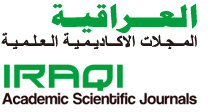Artificial Intelligence and Its Artistic Uses for Generating Environmental Aesthetics in Film and Television
DOI:
https://doi.org/10.35560/jcofarts1625Keywords:
artificial intelligence, artistic uses, generation, aestheticsAbstract
The relationships and interconnections between adjacent or divergent fields of knowledge have often constituted qualitative additions to human knowledge and contributed to the crystallization of new scientific/humanitarian maps, paths, and scopes that benefit and delight the details of daily life, as well as creating broader and more open cultural climates. The importance of the research lies in its shedding a bright light on the growing potential of artificial intelligence technology and its applications in cinema and television. The aim of this study was to reveal the ways in which artificial intelligence technology is employed to generate aesthetic environments in cinematic and television artworks. The theoretical framework included two chapters: the first: artificial intelligence: the essence and concept, from process to becoming; and the second: artificial intelligence and its operations in generating visual discourse environments. The third chapter included the research methodology and the research sample, as well as sample analysis. The research concluded with the results, conclusions, recommendations, and a list of sources
References
Abu Hammad, N.-D. (2011). Intelligence Tests, Field Guide and Reference. Jordan: Modern World of Books.
Al-Hariri, N. (2025). Artificial Intelligence Techniques in Filmmaking. Baghdad: Iraqi Media Network Workshop, College of Fine Arts, Haqi Al-Shabli Hall.
Al-Jaf, K. (2012). Problems of Philosophy in the Digital Age, A Study of Existence and Event. Baghdad: General Directorate of Cultural Affairs.
Bahgat, A. (2021). Environmental Films, Fashion or Confrontation. Kuwait: National Council for Culture, Arts and Letters, Al-Arabi Magazine, Issue 600.
El Shafei, H. (2018). Thailand closes DiCaprio's beach for harming the environment and tourism. Cairo: Youm7 Newspaper.
Frampton, D. (2009). Filmosophy: Towards a Philosophy of Cinema, trans. Ahmed Youssef. Egypt: National Center for Translation.
Ibrahim, F. (2006). Environmental Issues in Narrative Cinema: An Applied Study on the Realistic Trend in Egyptian Cinema. B.B: B.D.
Jaber, J. (1977). Educational Psychology. Cairo: Dar Al Nahda Al Arabiya.
Jose, L. (2001). Cinema and the Internet, translated by Natiq Khalousi. Baghdad: House of Cultural Affairs.
Kavitha, L. (2023, 7 13). Copyright Challenges in the Artificial Intelligence Revolution: Transforming the Film Industry from Script to Screen. Retrieved from https://figshare.com/articles/journal_contribution/Copyright_ Challenges_in_the_Artificial_Intelligence_Revolution_Transforming_the_Film_Industry_from_Script_to_Screen/23674407?file=41546781.
Musa, A. (2019). Artificial Intelligence - A Revolution in Modern Technologies. Cairo: Arab Group for Training and Publishing.
Rashti, J. (1978). The Scientific Foundations of Media Theories. Egypt: Dar Al Fikr Al Arabi.
Roy, R. (1971). Cybernetics and the Origin of Media. (A. Al-Awa, Trans.) Damascus: Ministry of Culture Publications.
Talib, M. (2024). The Effectiveness of Artificial Intelligence in Post-Cinema Proposals. Baghdad: University of Baghdad, College of Fine Arts, Master’s Thesis.














